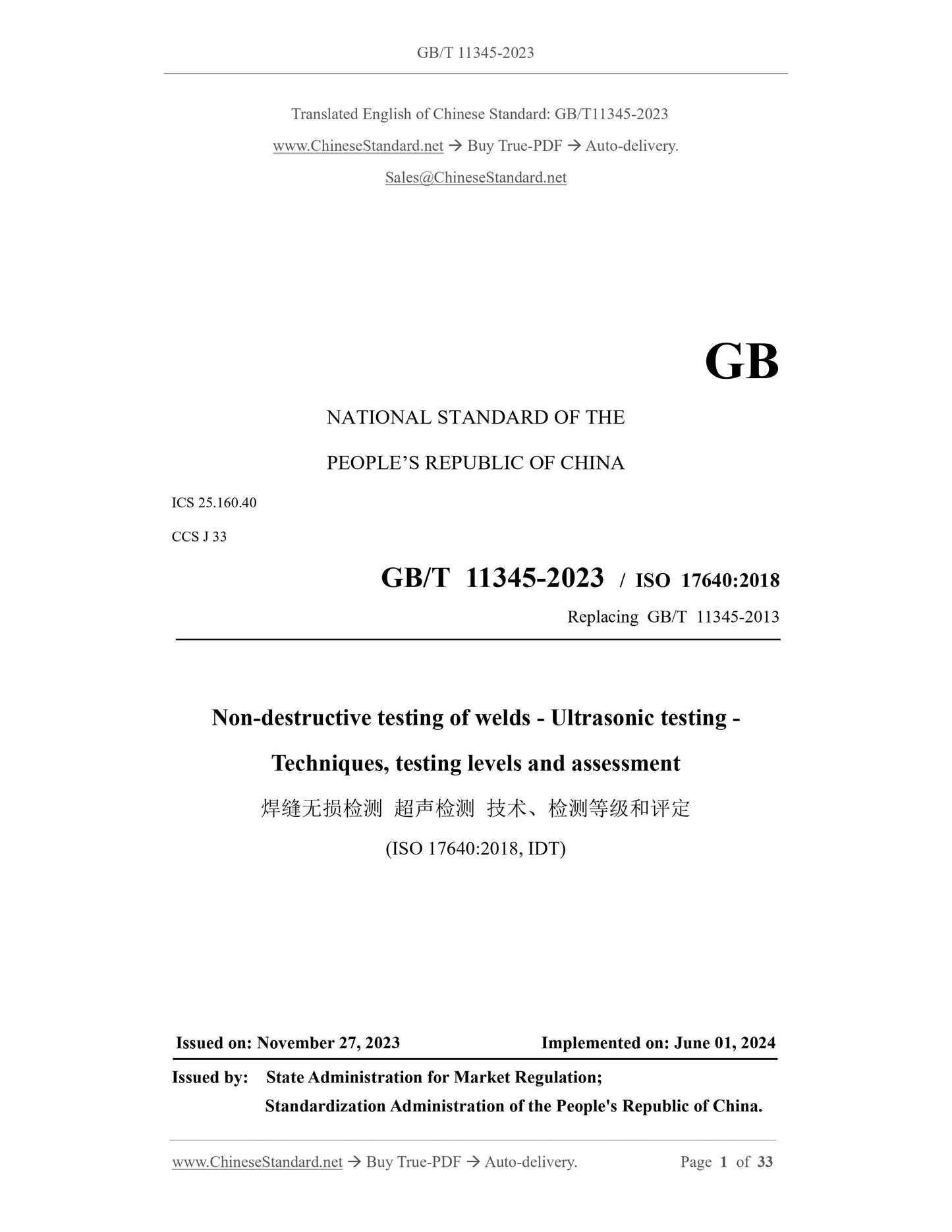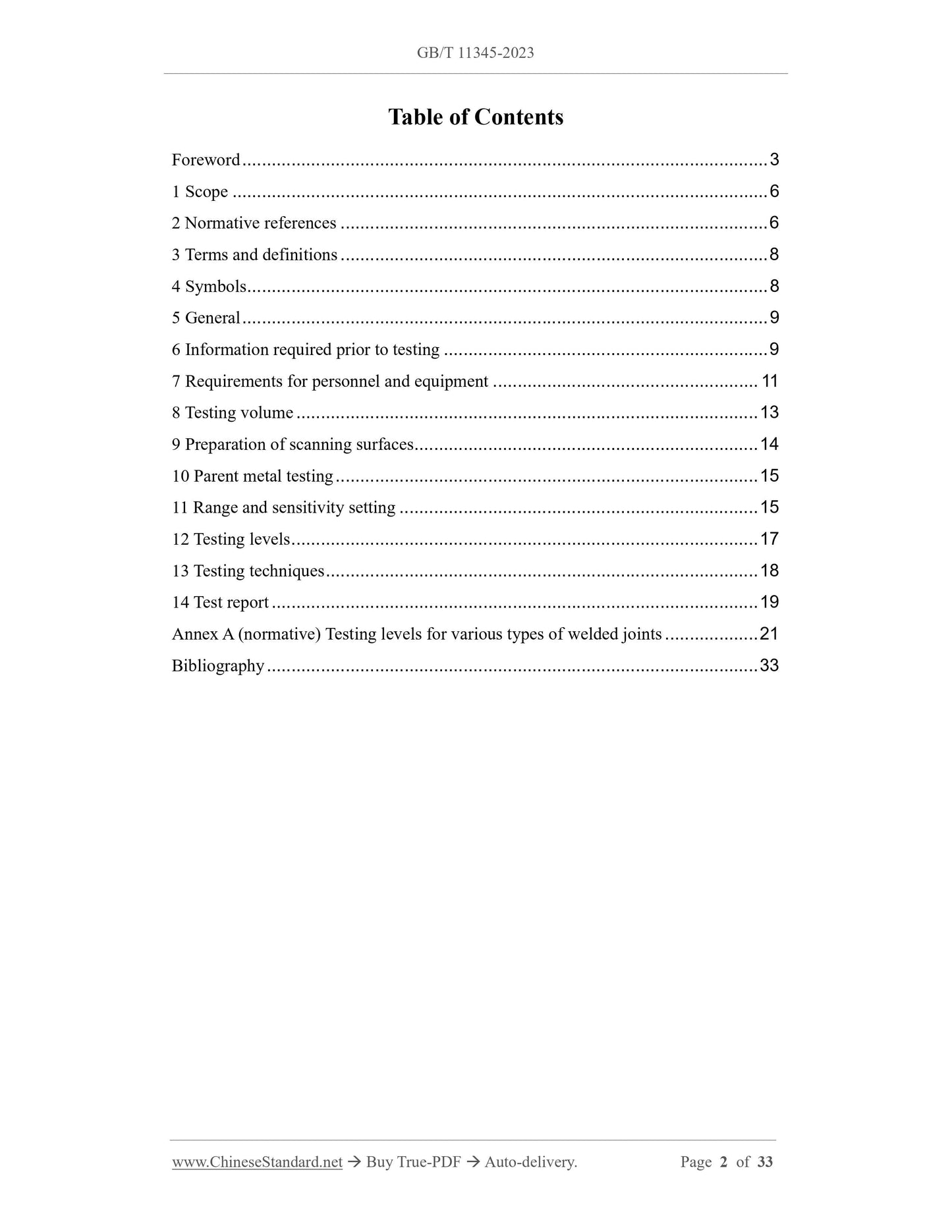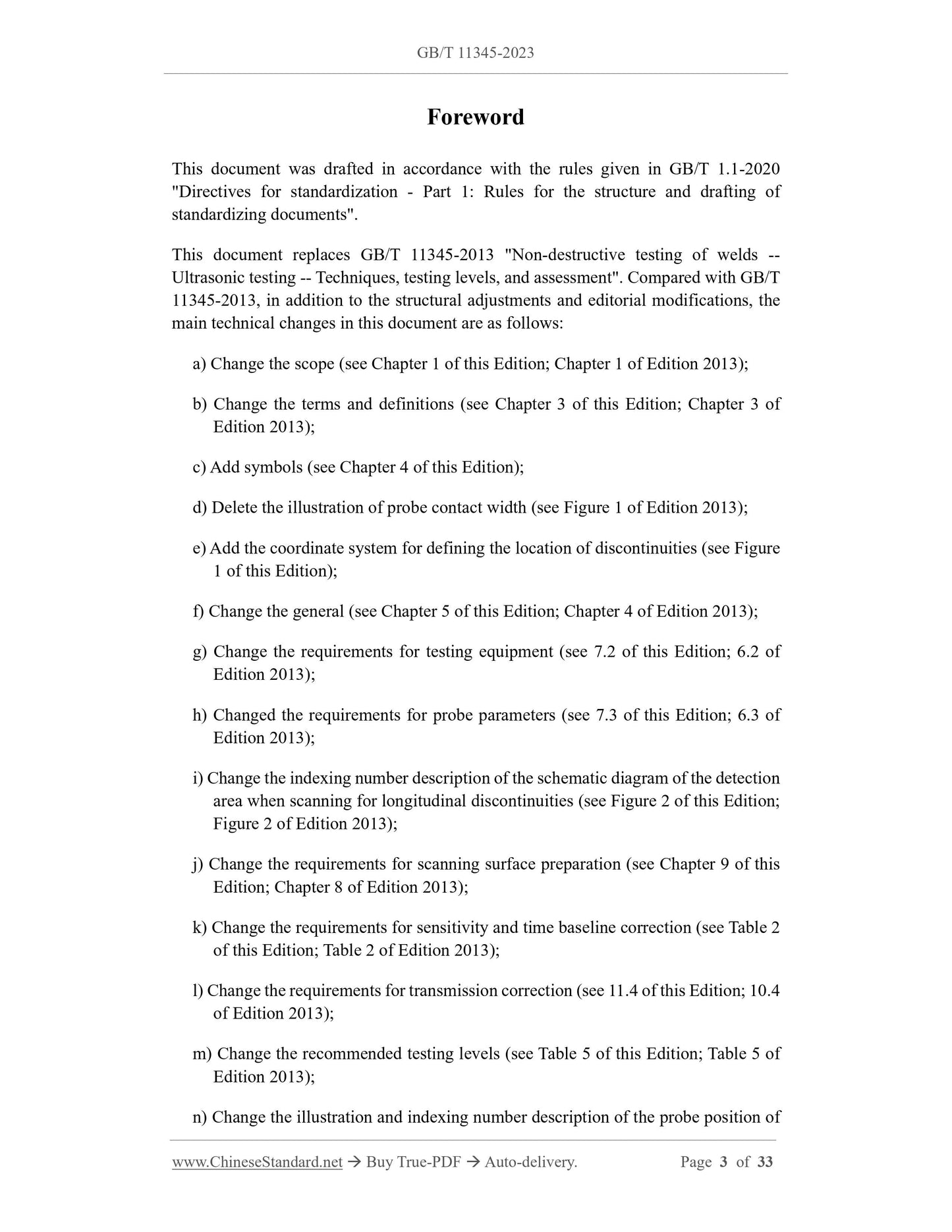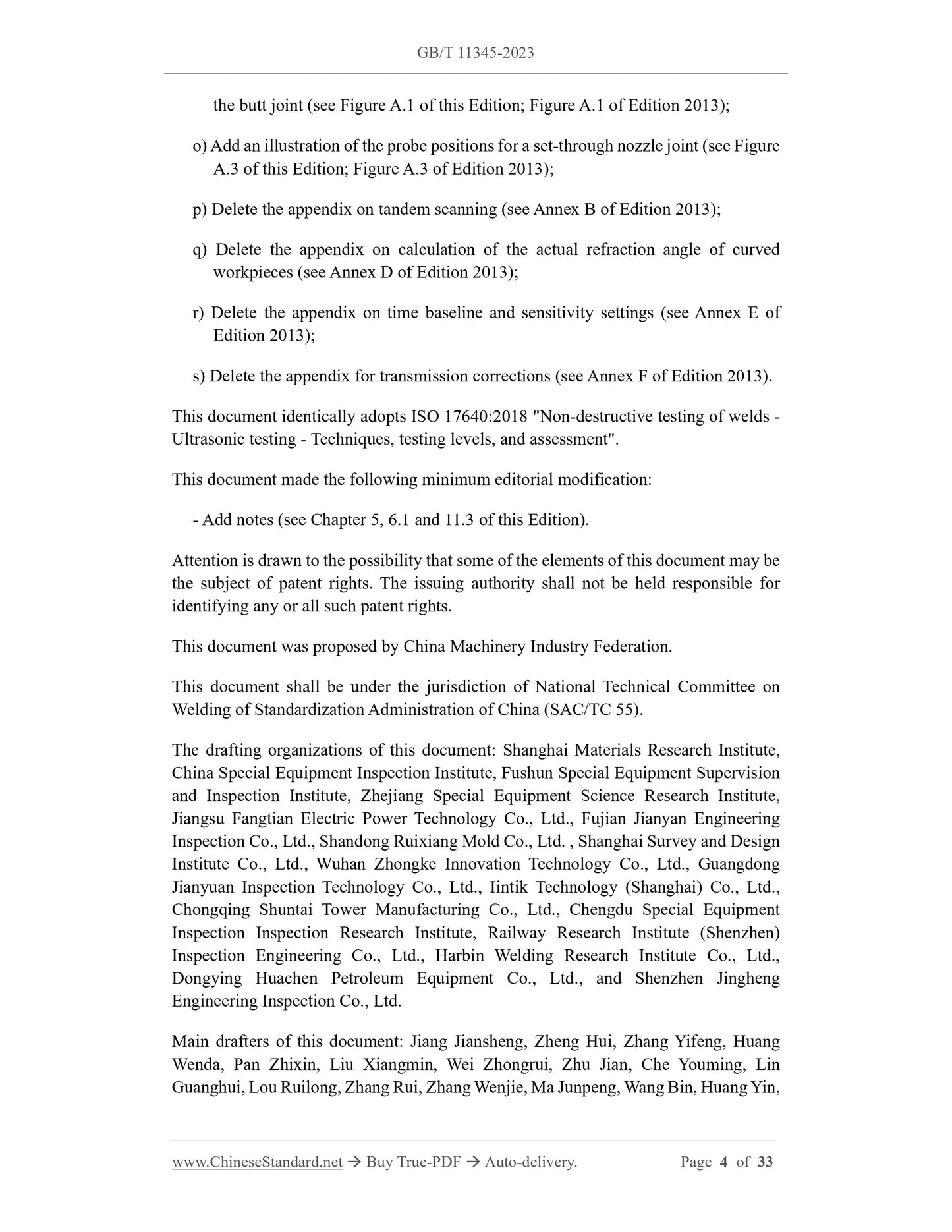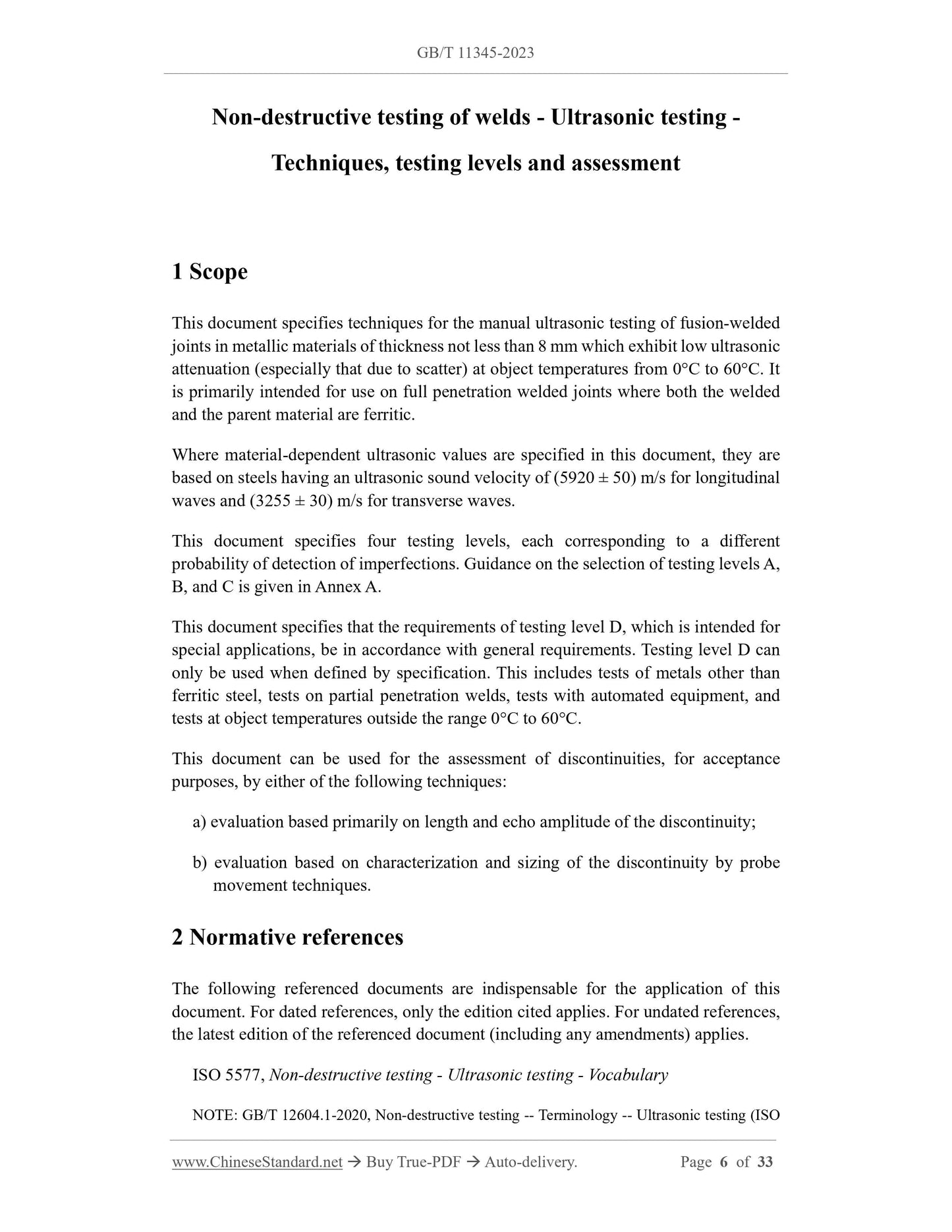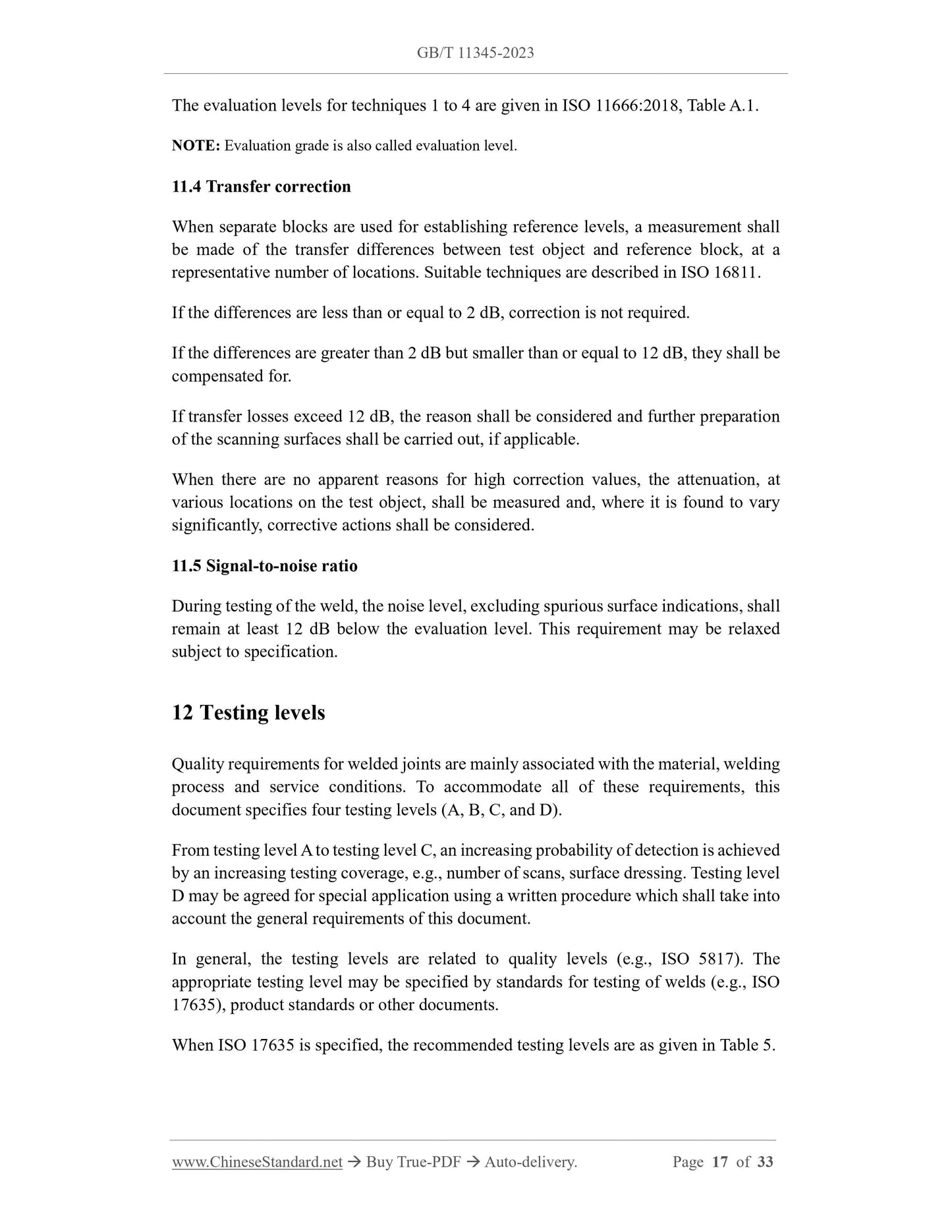1
/
of
6
www.ChineseStandard.us -- Field Test Asia Pte. Ltd.
GB/T 11345-2023 English PDF (GB/T11345-2023)
GB/T 11345-2023 English PDF (GB/T11345-2023)
Regular price
$380.00
Regular price
Sale price
$380.00
Unit price
/
per
Shipping calculated at checkout.
Couldn't load pickup availability
GB/T 11345-2023: Non-destructive testing of welds - Ultrasonic testing - Techniques, testing levels, and assessment
Delivery: 9 seconds. Download (and Email) true-PDF + Invoice.Get Quotation: Click GB/T 11345-2023 (Self-service in 1-minute)
Newer / historical versions: GB/T 11345-2023
Preview True-PDF
Scope
This document specifies techniques for the manual ultrasonic testing of fusion-weldedjoints in metallic materials of thickness not less than 8 mm which exhibit low ultrasonic
attenuation (especially that due to scatter) at object temperatures from 0°C to 60°C. It
is primarily intended for use on full penetration welded joints where both the welded
and the parent material are ferritic.
Basic Data
| Standard ID | GB/T 11345-2023 (GB/T11345-2023) |
| Description (Translated English) | Non-destructive testing of welds - Ultrasonic testing - Techniques, testing levels, and assessment |
| Sector / Industry | National Standard (Recommended) |
| Classification of Chinese Standard | J33 |
| Classification of International Standard | 25.160.40 |
| Word Count Estimation | 28,267 |
| Date of Issue | 2023-11-27 |
| Date of Implementation | 2024-06-01 |
| Older Standard (superseded by this standard) | GB/T 11345-2013 |
| Issuing agency(ies) | State Administration for Market Regulation, China National Standardization Administration |
Share
